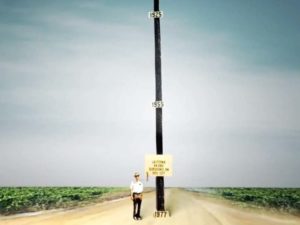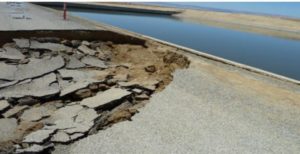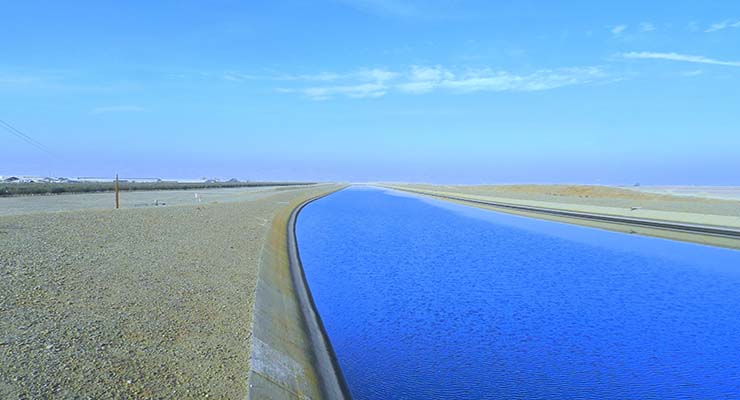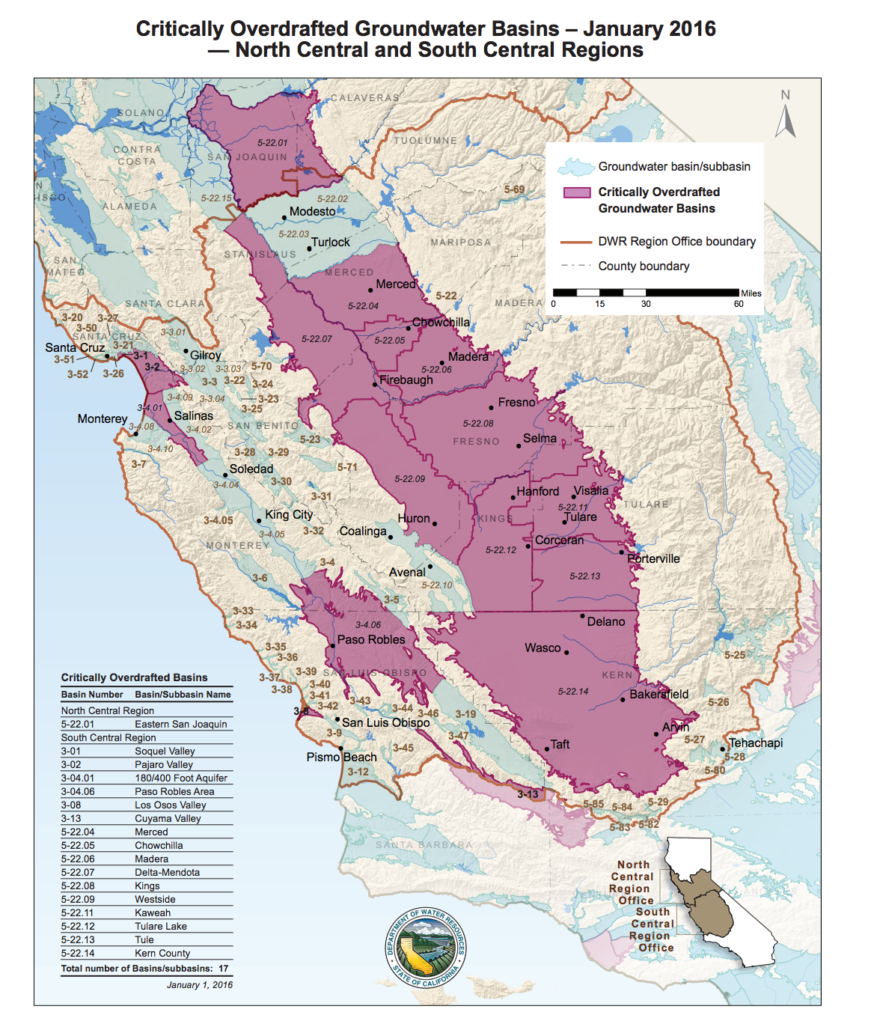
Among the more persistent mythologies of the American west, few are as enduring and erroneous as those about water, especially here in the San Joaquin Valley. The one consistent element in all of them is that no matter what’s wrong, “It’s all government’s fault.”
So it is that when California became the last state in the nation to regulate groundwater, the cry went up that water shortages are, “All the government’s fault.” And when the state tried to allocate water fairly and equitably, locals could only shout incessantly about the, “water grab.”
According to Valley farmers and their friends, fish don’t need water and neither do Delta farmers. That’s the message they send every time they complain about “flushing water out to sea.”
The latest anti-government tirade came from west side farmer John Michelena in a March 19 Community Column in the Modesto Bee. Michelena managed to achieve new heights (or depths, depending on how you look at it) of misrepresentation by ignoring history, economics, and ecology, all in only a few hundred words.
Michelena’s main gripe seems to be that water shortages are a new reality caused by government regulations and that groundwater depletion is the inevitable result of government failures to deliver surface water:
“When there’s substantially less surface water delivered to cities and farms, then groundwater becomes the only water that’s left. Groundwater problems are directly related to government, as are most problems.”
In fact, most of the Valley’s water was used up long ago when farmers—and it was mostly farmers—pumped enough groundwater to cause massive land subsidence in half the valley, some 5,200 square miles.

The excessive pumping began in the 1920’s, long before any government regulations, and was in addition to diversions of fresh water from every river and lake in the Valley. The diversions were so drastic they drained Tulare Lake entirely, which had previously been the largest fresh water lake west of the Mississippi.
Tulare Lake wasn’t the only casualty from fresh water diversions; farmers also diverted enough water from the San Joaquin River and its tributaries to dry it up for a sixty mile span nearly every summer. It was only after almost twenty years of litigation that the state required the river be restored to levels enough to support historic salmon runs.
As far as the fresh water that gets delivered to west side farmers like Mr. Michelena, most of it comes from state and federal water projects. Yes, that’s right—the “evil” government, using tax payers’ money, built the systems—the dams, the pumping plants, and the canals—that deliver surface water to San Joaquin Valley farmers like John Michelena in what amounts to a major tax payer-funded subsidy.

And the water that goes down those canals also belongs to taxpayers, who receive fewer benefits from farms than they used to. Yes, there was time when farmers could justify government subsidies by arguing such subsidies kept food prices down, but that was before the nut boom.
These days, more and more of that precious northern California water is pumped south for export crops—almonds and pistachios—that are sent to China, India, Japan, Germany and other foreign markets. The object with these crops isn’t to keep prices down, it’s to drive them up. There’s little benefit for tax payers.
Some of that northern California water comes at the expense of the last great aquifer in the San Joaquin Valley, one that is still viable but threatened. That aquifer is part of the great Modesto basin and extends from the eastern foothills to the city of Modesto. It is the only basin in the San Joaquin Valley not yet rated as “critically overdrafted,” but water levels are falling fast and unless action is taken soon, it too will be on the endangered list.
Nonetheless, and in another government gift to farmers, the Oakdale Irrigation District routinely sells local water to districts south of the Delta so Oakdale farmers can continue to receive water below the cost of delivery. A recent court decision agreed with members of the Oakdale Groundwater Association that such sales ignore California’s Sustainable Groundwater Management Act, the very act Mr. Michelena claims is “a new regulatory creature.”

In fact, it’s almost too late for regulation of groundwater to help any but a few basins, including Modesto’s own. Overuse of groundwater has damaged some places so much the groundwater can’t be recharged because compaction from subsidence has reduced the storage capacity of the aquifers.
In addition to the loss of aquifers, subsidence has damaged bridges, canals and buildings throughout the Valley. Ultimately, the expenses from that damage—billions of dollars—will be borne not by the farmers who profited from overdrafting groundwater but by the same taxpayers who subsidize the fresh water Mr. Michelena and his friends now demand as though they have superior rights to it.
In fact, other than a few riparian rights in select cases, west side and southern San Joaquin Valley farmers have no water rights. Nonetheless, they’re blaming government for water shortages they created through overuse and overdrafting.
Those who blame government for our water problems are right but for the wrong reasons. Yes, government is a major cause for shortages or water, but that’s because of the failure of government to regulate overuse of a public resource by private enterprise.
Anyone who wants a sustainable future for water in the San Joaquin Valley should be supporting government efforts to regulate groundwater usage, not opposing them. It’s time for socializing costs and privatizing profits to come to an end.

I agree with many of your observations however the answer is Central Valley water users taking responsibility for themselves and each other. One approach that can accomplish water sustainability is government intervention (i.e. regulation). That is not a popular strategy however other strategies can be attempted; see http://www.operationunite.co which keep management local. People can still have their independence. It gets down to values.
Mr. Baker: If you want a good example of what happens when you “keep management local,” study the Oakdale Irrigation District where farmers get water below the cost of delivery, ignore locals within the sphere of influence and sell to Westlands Water District. Or you can look to Modesto Irrigation District, where electric users subsidize farmers. Regulation isn’t popular with those who benefit from special treatment, but it’s more likely to look at the problem holistically rather than as a perk for wealth and power.
The problems we have today are the result of joint negligence in the public and private sectors. More important is what we are going to do to address the shortage and when. I have laid out a number of proposals in past articles of the Valley Citizen. Do we have to run out of water before anything is done?
KEEP SWINGIN’L ERIC. YOU BEES MAH MAN.
Excellent article, and thanks for acknowledging how some people put private greed over the public good. I was speaking with a rep at the Nebraska booth the last time I attended the Tulare Farm Show. We talked about the Ogallala aquifer, how they regulate the water, and new legislation to regulate ours. He was surprised we didn’t regulate our water and was even more shocked when a local farmer criticized the regulation as an affront to his liberty. The Nebraskan asked him why pump as much water as he can knowing it’ll harm his neighbors and others who rely on our natural resources?
My maternal grandmother grew up a gold miner’s daughter 120 years ago off Henness Pass Rd, the main wagon road into California north of Donner Pass. She lived near the headwaters of Oregon Creek at about 4,500 feet when they had at least 6-8 feet of permanent winter snow on the heels of the Little Ice Age. Their winter door was in the gable. We never get that much snow at 4,500 anymore. Juan Rodriguez Cabrillo sailed along California the winter of 1542 soon after the Little Ice Age began and wrote about snow capped mountains surrounding Carmel and Monterrey. Evidence from tree-ring data and ice core samples for the last 8,000 years shows western America is far drier than previously believed.
We need to live within our means, and that means water policies developed 130 years ago on the heels of the Little Ice Age are not valid for the historical aridity of the west. We must ensure the public good trumps private greed during the development of our groundwater regulations. The Sierra watershed is a public resource that belongs to every Californian not a private trophy for those who live upstream.
I’m with Alfredo!
Nice work, Eric.
Tragedy of the Commons
Good article.. funny I just got through reading “drought by design” written by Devin Nunes regarding the “Delta smelt” preservation! Oh man that wreaked havoc on central valley agriculture as well as drinking water (uranium, radium, chromium hex and all kinds of lovely names. Not to mention dust levels going up carrying valley fever etc.. I’m fairly neutral in stance on these issues.. the almond boom has definitely wreaked havoc especially this year with crop-dusting fungicide which drifts into town.. been sick since they are crop-dusting 7 days a week, both night and day here in Madera county (Chowchilla) CA area. Needless to say, I have issue with almond production and it’s back of concern for citizens houses near by! I have never in my life seen the amount of crop-dusting almonds as I have this year. Called agenda commission says can’t do anything about it, same with CA EPA..?..??
I feel for you Mr. Joseph. The southern San Joaquin Valley is one of the most unhealthy places to live in the U.S. and the Trump administration is relaxing regulation on pesticides. If you can, move.